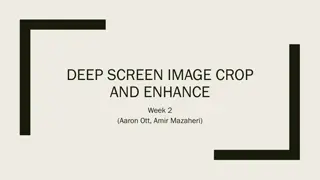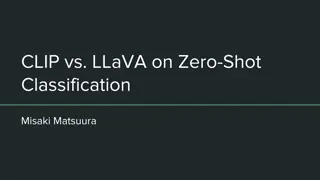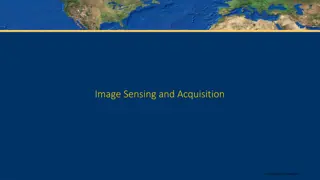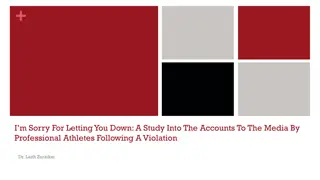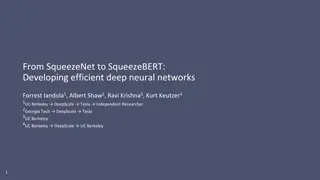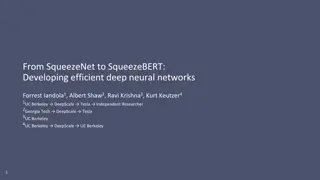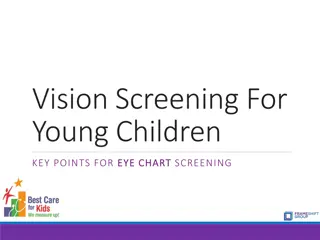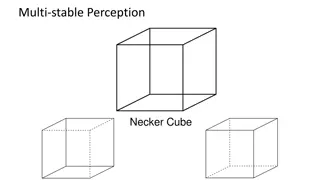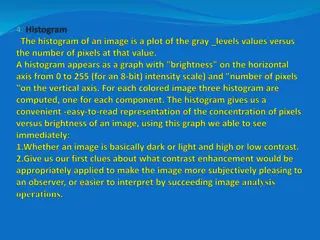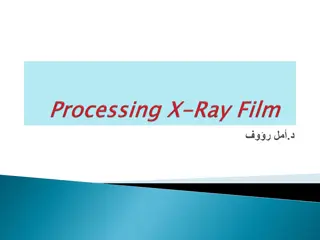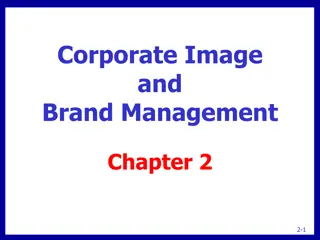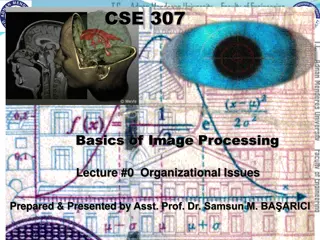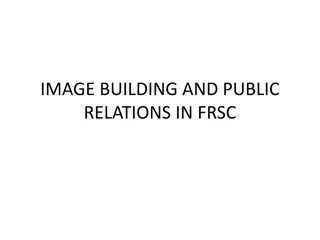Understanding Image Classification in Computer Vision
Image Classification is a crucial task in Computer Vision where images are assigned single or multiple labels based on their content. The process involves training a classifier on a labeled dataset, evaluating its predictions, and using algorithms like Nearest Neighbor Classifier. Challenges and the data-driven approach play significant roles in improving the accuracy of these models, as showcased in datasets like CIFAR-10.
Download Presentation

Please find below an Image/Link to download the presentation.
The content on the website is provided AS IS for your information and personal use only. It may not be sold, licensed, or shared on other websites without obtaining consent from the author. Download presentation by click this link. If you encounter any issues during the download, it is possible that the publisher has removed the file from their server.
E N D
Presentation Transcript
2019 MVL Lab Training Course Computer Vision & Deep Learning - 1 Presenter: Hao-Ting Li ( )
To Accomplish Computer Vision... Ref: https://www.slideshare.net/darian_f/introduction-to-the- artificial-intelligence-and-computer-vision-revolution
Image Classification The task in Image Classification is to predict a single label (or a distribution over labels as shown here to indicate our confidence) for a given image. Images are 3-dimensional arrays of integers from 0 to 255, of size Width x Height x 3. The 3 represents the three color channels Red, Green, Blue.
The Image Classification Pipeline Input Our input consists of a set of N images, each labeled with one of K different classes. We refer to this data as the training set. Learning Our task is to use the training set to learn what every one of the classes looks like. We refer to this step as training a classifier, or learning a model. Evaluation In the end, we evaluate the quality of the classifier by asking it to predict labels for a new set of images that it has never seen before. We will then compare the true labels of these images to the ones predicted by the classifier. Intuitively, we re hoping that a lot of the predictions match up with the true answers (which we call the ground truth).
Example Image Classification Dataset: CIFAR-10 60,000 tiny images that are 32 pixels high and wide a training set of 50,000 images a test set of 10,000 images Each image is labeled with one of 10 classes (for example airplane, automobile, bird, etc )
Nearest Neighbor Classifier Take a test image Compare it to every single one of the training images Predict the label of the closest training image.
The Choice of Distance L1 Distance ? ?2 ? ?1?1,?2 = ?1 ? L2 Distance ? 2 ? ?2 ?2?1,?2 = ?1 ?
k - Nearest Neighbor Classifier Instead of finding the single closest image in the training set, we will find the top k closest images, and have them vote on the label of the test image. The colored regions show the decision boundaries induced by the classifier with an L2 distance. The white regions show points that are ambiguously classified (i.e. class votes are tied for at least two classes)
Validation Sets for Hyperparameter Tuning Hyperparameter k-NN, k=? L1 norm or L2 norm? We cannot use the test set for the purpose of tweaking hyperparameters overfit to the test set Solution: Split our training set in two a slightly smaller training set validation set e.g. CIFAR-10 50000 training set -> 40000 training set and 10000 validation set
Cross-Validation Example: 5-fold cross validation
Pros and Cons of Nearest Neighbor classifier. Pros simple to implement and understand the classifier takes no time to train Cons pay that computational cost at test time In practice, we often care about the test time efficiency much more than the efficiency at training time.
Summary Image Classification Nearest Neighbor classifier Hyper-parameter Validation set Cross-Validation
Reference CS231n: Convolutional Neural Networks for Visual Recognition http://cs231n.github.io/classification/



